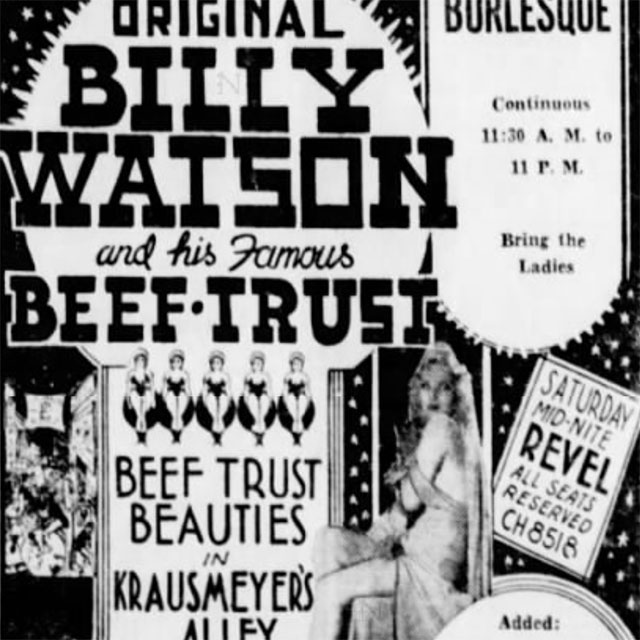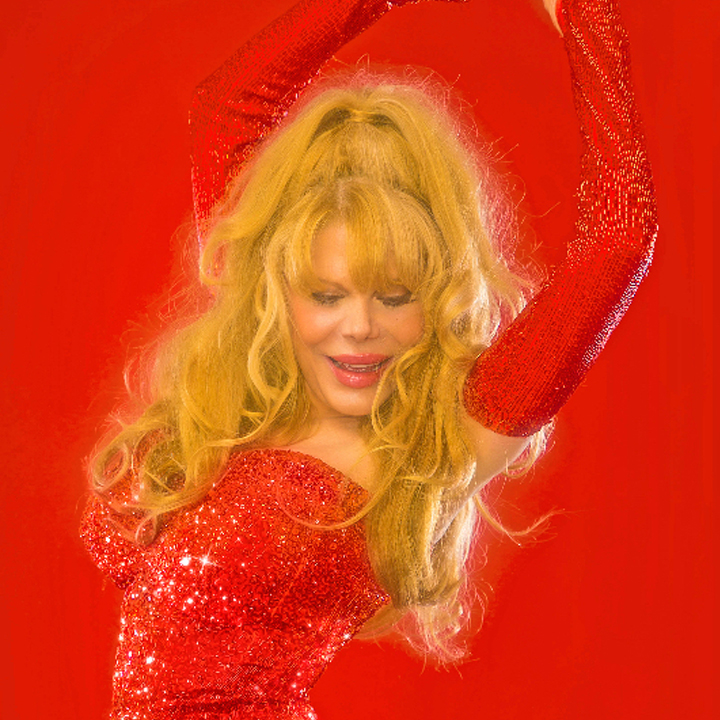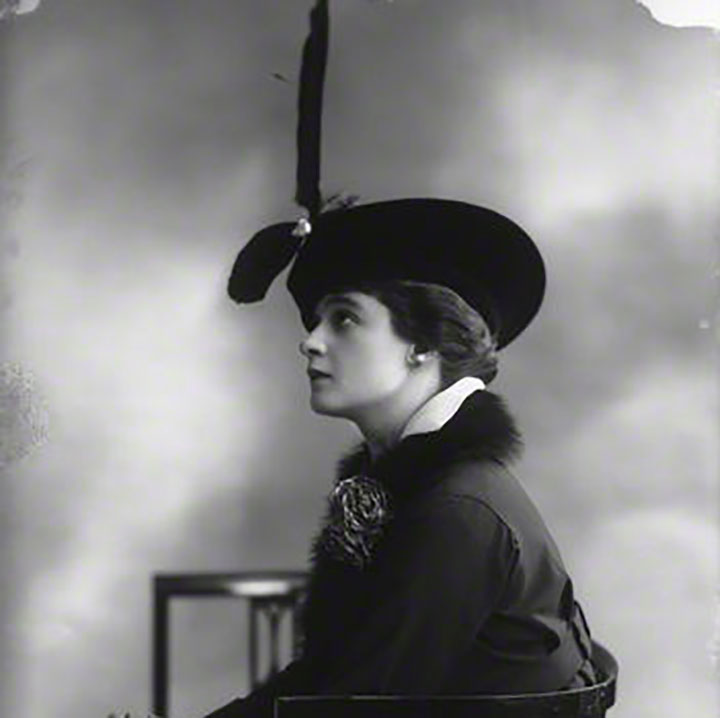
The Spirit of Capitalism Made Flesh
if you like 'em big, well, they don't get any bigger than this
Hey there, lodge members! #13 here.
Now, you may not know it, but when all y’all meet some secret criteria the Grand Jackalope orders me to release a bonus episode at the end of the series. And boy oh boy, did you guys meet some secret criteria this time around. Praise be to the Grand Jackalope and her mysterious and unfathomable ways.
And that’s put me in a bit of a bind. Normally I’d just release an errata episode, but, well, I just released one at the end of the last series. And while I wouldn’t be so bold as to claim I hadn’t discovered any errors since then, well, I certainly haven’t made enough to fill a five minute episode.
So instead, you’re getting this.
Sometimes, when you’re doing research, you stumble across weird little footnotes that you just have to check out. They’re usually intriguing enough that you don’t feel you’ve wasted your time, but maybe not something you would ordinarily build a full episode around. For instance, “Baby Ruth: The world’s only roller-skating pony.”
This is one of those. So, um, lower your expectations. Maybe don’t expect this to go anywhere.
…
It all starts with Billy Watson.
Watson was born into a Jewish immigrant family on New York’s Lower East Side in 1867. As a fourteen-year-old he left behind solid work as a furrier to take a job singing on stage in the Bowery. Soon he was a staple of the Eastern vaudeville and burlesque circuits performing with groups like the Ida Siddons Company and the Rentz-Santley Burlesquers, specializing in ethnic caricatures, mostly German and Jewish.
The Scranton Times once praised Watson by saying, “He differs from the majority of his footlight fellows in not trying to be funny.” (I think they were trying to say his performances were effortless, but boy, that sure sounds like a back-handed insult, doesn’t it?) He was known far and wide for putting on a show that was vulgar without being smutty; for the effortless way he tailored his act to local standards of decency; and for a mean-spirited feud with fellow burlesquer “Sliding” Billy Watson which eventually led our Billy Watson to bill himself as “Original” Billy Watson.
The irony is that “Original” Billy Watson wasn’t even the original Billy Watson. He had been born Isaac Levie and started out with the stage name “Billy Buttons.” But one night at the Sixth Avenue Museum in Pittsburgh, he had to fill in for a performer who was too sick to go on. The show went so well that Levie decied to steal the name as a sort of good luck charm. That name, of course, was “Billy Watson.”
As for “Sliding” Billy Watson, his claim to fame is that he would punch up his jokes with a spectacular slide across the entire stage, thanks to smooth-soled shoes and a dry lubricant. He’s also often incorrectly credited with inventing the gag of slipping on a banana peel.
I digress. But then, seriously, this whole episode is one giant digression.
Around 1899, Watson had his big breakthrough with his first production of Krausmeyer’s Alley.
The play tells the story of the feud between Philip Krausmeyer, a very German immigrant, and Billy Grogan, a very Irish immigrant. It’s two acts chock full of ethnic humor, insult comedy and slapstick. (Seriously, at one point the characters apparently throw dead cats at each other across the alley that separates them.) The two men eventually bury the hatchet when their kids fall in love and get married.
It sounds terrible. Most likely, it was terrible. So of course it was a smash hit, one of the first burlesque shows to play on Broadway. It’s easy to see why: it appeals entirely to the lowest common denominator with ethnic jokes and slapstick, and then ends with a tacked-on moral that sends the audience home feeling temporarily enlightened for having briefly contemplated the idea that the Jews and the Irish are people too.
Watson parlayed the success of Krausmeyer’s Alley into ownership of the Cozy Corner Theatre at Pearl and Willoughby in Brooklyn. Then he sold the Cozy Corner to Marcus Loew (yes, that Marcus Loew) and used the proceeds from that sale to buy his way into the big time, becoming one of the principal stakeholders in vaudeville’s Empire Theater circuit. (He even helped give a leg up to his brother Lew, who became the owner of the Washington Society Club in DC.)
The whole time Watson continued to tinker with the play. He altered his jokes and ad libs to suit local tastes. He completely rewrote the second act into the crowd-pleasing “Krausmeyer’s Christening.” He chopped it down to one act and teamed it with one of his other shows like “In Bashful Clover” or “The Beautiful Venus.” He tinkered with the staging, the sets, the costumes, anything to keep it play fresh. I’m sure if he had time, he would have found a way to send Krausmeyer to Hawaii, only to fall prey to a cursed tiki necklace.
In 1909 he decided to tinker with his chorus girls.
Now, Krausmeyer’s Alley had always had chorus girls. Most burlesque shows did. They would dance and sing between act and scene changes, prance around in the background, give the audience something to ogle, and get pinched or paddled by the actors to help cover up mistakes.
(I should make it clear that this was when burlesque shows were actual variety shows and not girlie shows, so there was nothing sexy going on. Just good old-fashioned sexual harassment.)
Now, Billy Watson liked his chorus girls well-fed. Voluptuous. Statuesque. Amazonian. Thicc. However you want to say it.
This in itself wasn’t unusual. In the late nineteenth century, that body type was de rigeur. Everybody in America liked a woman with an itty bitty waist and a round thing in your face. It was only when the Gay ’90s were in the rearview mirror that public taste started to shift towards thinner women. By 1909, the day of the larger woman was clearly in the past.
Watson decided to make a nostalgia play and get down with the thiccness. Each of his new chorus girls had to weigh at least 180 pounds, with some of them topping the scales at 200 pounds or more. They also had to be bosomy and leggy. He even dressed them in horizontal stripes to accentuate their size. To cap it off, he rebranded his “American Burlesquers” with a new name taken from Upton Sinclair: “The Beef Trust.”
Yeah.
The Beef Trust Beauties made their debut in the spring of 1909. The press made light of the concept, calling the chorus line “a thundering herd of bovine burlesque beauties” who represented “the Taft variety of femininity.”
Watson went on the defensive: “People get the idea that just because a gal tops 200 she’s fat and nothing else, but she can still be big and beautiful. Why, I dare anybody to say my girls aren’t petite, and besides they can do some routines better than little girls can.”
One review noted, “Some older stages than the Empire’s would be in danger of collapsing under the terrific strain when these human pachyderms dance.” Rumors that the stage had to be reinforced to withstand the stress of “5000 pounds of avoirdupois” were flatly denied, though the (ironically-named) Scranton Truth claimed, “men in the underground workings of the city were kept on the rush putting up additional timber to ensure safety when the trust was en route to the theatre.”
Unsurprisingly, the Beef Trust was a draw. It managed to appeal both to the older audience members, nostalgic for the body type of their youth, and the finicky fetishists who were quickly becoming burlesque’s primary audience. He also marketed it to the curious with gimmicks: offering dollar-a-dance nights with the Beef Trust Beauties and claiming he’d award a $10 gold certificate to anyone who could guess the Trust’s combined weight.
As the years went on the Beef Trust became a bigger part of the show, even eclipsing Krausmeyer’s Alley in popularity. Over the years the chorus grew bigger, swelling to over thirty girls, some of them weighing up to 250 pounds.
Of course, nothing lasts forever. When the Beef Trust seemed to have run its course in the late 1920s, Watson briefly replaced them with a “Chicken Trust” of near-anorexic girls. That didn’t seem to have the same appeal, and soon the Beef Trust Beauties were back, playing to shrinking audiences.
Watson eventually made enough money from Krausmeyer’s Alley to branch out into real estate and retire. Every once in a while he’d feel the call of the footlights and stage a comeback, but for the most part he was happy to license out his name and show to others and enjoy the royalties. Well, except for the ones his manager stole from him. In 1945 died in his sleep at his home on the shores of Lake Como. Er, Lake Como, New Jersey, that is. And when I say “died in his sleep,” well, it’s less “natural causes” and more “suffocated to death because of a gas leak.” Hey, they can’t all be happy endings.
Krausmeyer’s Alley remained an entertainment industry staple for almost fifty years. In 1934 it was even turned into a radio show, Krausmeyer and Cohen, but it only lasted a few episodes. But when the burlesque circuit started to die, well, that was the end of the road for the show. Like most burlesque farces, it didn’t actually have anything resembling a fixed script, so Krausmeyer’s Alley became lost to history. But in many important ways, its spirit lives on in every pandering, uninspired sitcom and movie Hollywood churns out. Krausmeyer’s legacy is 120 years of Bridget Loves Bernie and Meet the Fokkers. What a proud papa it must be.
The phrase “beef trust” became an insider industry term for a chorus of large girls. The Beef Trust Beauties themselves largely disappeared from show business. The name was given a second run as part of the 1960’s vaudeville revival that also gave us Gypsy and Funny Girl. The new Beef Trust Beauties didn’t last long, but they did manage to make it on to a Barbra Streisand TV special, The Belle of 14th Street, in 1967. And honestly, being on stage with Barbra, isn’t that all any of us could ask for?
So that’s it. A bunch of stuff that happened.
Oh, you want a connection? Well, Lake Como is in Monmouth County, New Jersey. That’s where Series Four’s “Pleadings from Asbury Park” is set. There’s no other overlap between the stories at all, though. Weak, I know.
Preview of Series Six
Series Six is going to be fun. Just to give you a brief taste of what you can expect, here are some of the resources we consulted while researching those episode:
- American Demagogues
- American Eccentrics
- The Chocolate Chronicles
- Duet in Diamonds
- Fads and Fallacies in the Name of Science
- Haunted New Jersey
- Mystics and Messiahs
- Peacocks on Parade
The Ancient and Esoteric Order of the Jackalope podcast will return on December 28th with an episode we’re calling “The Terror of Gillikin Country.” Until then, have some happy holidays, and remember: quiquid minime sciunt, optime scire.
Errata
(All corrections from the errata have been incorporated into this article, but not into the published audio.)
Sources
- Burke, John. Duet in Diamonds. New York: G.P. Putnam’s Sons, 1972.
- Cullen, Frank et. al. Vaudeville, Old and New. New York: Routledge, 2006.
- Sobel, Bernard. A Pictorial History of Burlesque. New York: Bonanza Books, 1956.
- “Billy Watson at the Empire.” Brooklyn Citizen, 28 Mar 1909.
- “Stock burlesque at Bijou.” Philadelphia Inquirer, 18 May 1909.
- “Empire Theatre opens.” Brooklyn Chat, 7 Aug 1909.
- “Stage notes.” Brooklyn Times-Union, 11 Aug 1909.
- “In the theaters.” Indianapolis Star, 23 Nov 1909.
- “Beef Trust given a hot poke.” Munster (IN) Times, 20 Dec 1909.
- “At Columbia.” Scranton Times-Tribune, 11 Apr 1910.
- “Fine line of dressed beef at Empire.” Brooklyn Times, 21 Jun 1910.
- “No short-weight at the Empire this week.” Brooklyn Times-Union, 25 Oct 1910.
- “Beef Trust? Billy Watson says it’s worth $100,000 to use it.” Paterson (NJ) News, 25 Feb 1944.
- “Billy Watson dies at Belmar.” Asbury Park (NJ) Press, 15 Jan 1945
- “Final rites held for Billy Watson.” Patterson (NJ) Morning Call, 16 Jan 1945.
- “Casino has ‘Beef Trust.” Pittsburgh Post-Gazette, 21 May 1964.
- “Beef Trust Beauties.” Quad City Times, 25 Sept 1967.
- Betz, Frederick. “Krausmeyer’s Alley: Slapstick Burlesque in Mencken’s Christmas Story.” Menckeniana, No. 210 (Summer 2015).
Categories
Tags
Published
First Published:
Last Edited:


